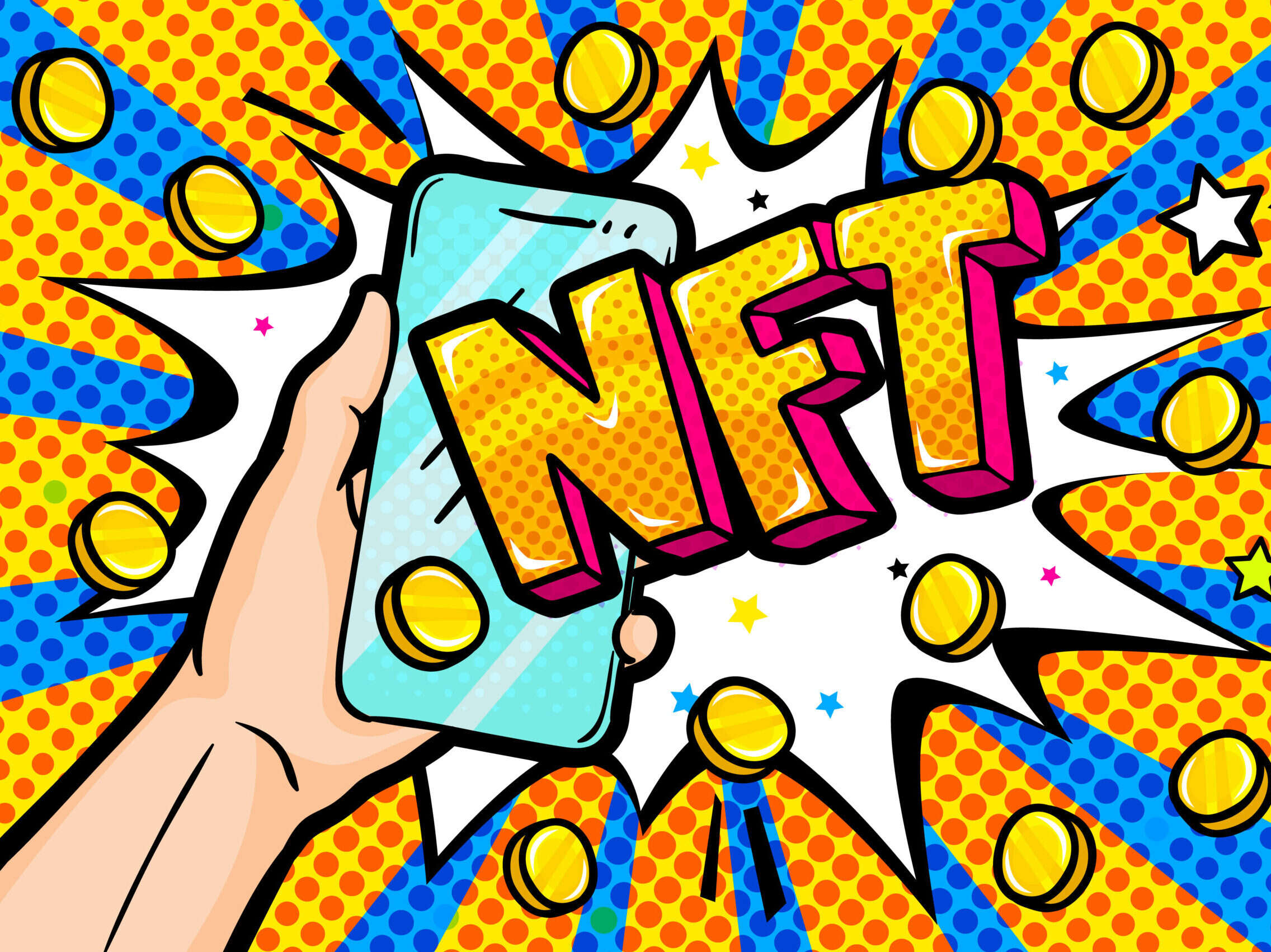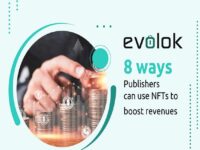
Partner content*: NFTs, or Non-Fungible Tokens – which have made millions for some sellers – should not be dismissed as a “flash in the pan” but rather a “prime opportunity” for publishing businesses.
Publishers moving into the digital space can use NFTs to strengthen their business and make digital pay, according to leading digital subscriptions platform Evolok.
The global NFT market is estimated to be worth $35bn (£30bn) in 2022 and more than $80 billion (£68bn) by 2025, according to investment bank Jeffries.
In a new white paper Evolok sets out 8 Ways Publishers Can Use NFTs To Boost Revenues.
But first, what exactly is an NFT, or Non-Fungible Token?
NFTs and publishing: the basics
An NFT is a unique digital certificate that records ownership of a digital asset. Importantly the transaction is registered in a blockchain (the same used for cryptocurrencies) which is “a shared, immutable ledger that facilitates the process of recording transactions and tracking assets”.
In short, if you own the NFT you own the original digital asset (even if it’s freely available online) and this fact is recorded in a secure online ledger that cannot be forged or deleted.
NFTs are either one of a kind or have multiple copies, like collectors’ cards. They have mostly been used in the realm of digital art, with the holder owning what is essentially an “original” copy of the artwork, although crucially for creators – and publishers – this does not confer copyright.
The NFT bubble suddenly blew during the pandemic, making headlines for the astronomical sums paid to own digital artworks. The singer Grimes made $6m at an auction selling NFTs for ten pieces of original digital artwork last year, including short videos. People have even bought memes.
But while recent headlines have been less jubilant – daily average sales fell 92% in May from a peak of 225,000 in September last year – Evolok says “the underlying principles of NFTs remain sound”.
In its white paper, Evolok points to the “underlying promise of the technology in the longer term”, adding that “despite all the technological sophistication that underpins their origins, [NFTs] represent another exciting new market for the publishing industry to leverage to its advantage”.
 8 ways publishers can use NFTs to boost revenues
8 ways publishers can use NFTs to boost revenues
Download Evolok’s free white paper here.
Reach a new ‘young and affluent’ publishing audience with NFTs
As the NFT market skews “young and affluent”, with interest often from “tech-savvy consumers looking to invest disposable income”, NFTs offer a chance for publishers to reach “precisely the online communities that have been lost to traditional publishing”, says Evolok, with this audience simply “waiting to be activated by digital publishing that chimes with their interests”.
“NFTs represent a prime opportunity for expanding the overall demographic of a publisher and unlocking a cohort that is extremely attractive and notoriously elusive to advertisers,” Evolok says.
NFTs make ideal rewards for readers, offering them either as a publically tradeable asset or as tokens that can be traded within a closed in-house system.
Rewarding readers with NFTs for signing up for newsletters or sharing articles on social media, for example, can add a “valuable element of gamification” says Evolok, increasing engagement at comparatively low cost as all assets are digital.
A publisher of a different type, DC Comics (the home of Superman and Batman etc.), gave away free NFTs of its comic book covers to fans who registered for its annual online event, FanDome, last year. Those who posted about receiving their first free NFT on social media became eligible for a second. DC Comics appealed further to collectors by making some covers rarer than others.
News and magazine publishers can do the same with their own events, incentivising people to sign up. “Individual digital tickets for an event can be created as NFTs… each one becoming a unique tradable commodity in its own right, providing the sort of draw that can prove a hit with sponsors,” says Evolok.
What can publishers offer as NFTs?
Recent Press Gazette analysis of a selection of top news publishers found they had sold nearly $12m (£9m) worth of non-fungible tokens (NFTs) since March 2021, of which $10m, by far the largest amount, was made by Time, with the New York Times following at $560,000 (£430,000).
Creating an NFT is known as “minting”, and any digital asset can be minted. The NYT made its six-figure sum from the sale of a single column at auction, paid for in the cryptocurrency Ethereum.
Time magazine auctioned off NFTs for three of its iconic covers in March last year, including one created especially for the auction, all of which sold for the equivalent of $435,000 (the sale was also made in Ethereum). Time’s embracing of NFTs, which has included creating its Timepieces initiative selling collections of digital artwork, helped it to achieve its highest revenue growth in over a decade at nearly 30 per cent last year, Press Gazette reported in January.
Publishers may have a wealth of valuable content sitting untapped in their archives that could be auctioned off as NFTs, without losing copyright. “Only originators of content or holders of intellectual property rights are allowed to create NFTs from digital assets,” says Evolok.
“Because an NFT does not involve a transfer or copyright, publishers for instance can offer seminal images from their archives as NFTs while still retaining all usage rights.”
As such NFTs “open up new possibilities for exploiting old IP that previously was too difficult to organise or monetise”, such as material revealing the process behind creating an iconic headline, cover, or front page story, and pictures or videos that made an impact.
NFTs help build data picture of readers
NFTs are also a way for publishers to learn more about their readers, by adding valuable data insights into their behaviour to build up a clearer picture of their interests.
“By offering NFTs to your subscribers you are accruing valuable data about who is interested in them, who purchases them, what sort of NFT in particular they are interested in, and more,” says Evolok.
“All those eyeballs come back to your data operation and can be used to further engage with your existing readership by way of personalised content featuring NFTs or specific calls to action.”
Publishers can then use reader interest in NFTs in the same way they use it in any other subject, be it sports or politics: “to drive further specialised content and maximise engagement”.
“Once the NFT audience is segmented within your data, you can start addressing affinities within that audience to further maximise the impact of your content,” says Evolok.
“A tech savvy sub-section of that audience may well be interested in a pop-up offer regarding new smartphone developments, while those more interested in the investment angle of NFTs could be receptive to a financial news newsletter.”
*This article was sponsored by Press Gazette commercial partner Evolok.
Email pged@pressgazette.co.uk to point out mistakes, provide story tips or send in a letter for publication on our "Letters Page" blog
